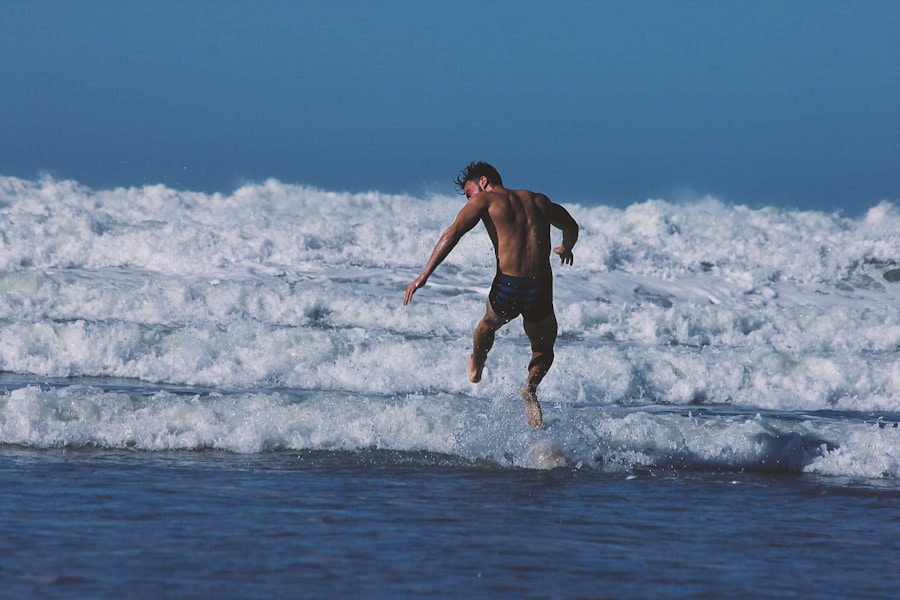Download links
How to install Surfing Makes Its Olympic Debut APK?
1. Tap the downloaded Surfing Makes Its Olympic Debut APK file.
2. Touch install.
3. Follow the steps on the screen.
Description
Surfing, a sport deeply rooted in the cultural heritage of Polynesia, has a history that stretches back centuries. The earliest records of surfing date to the 12th century in Hawaii, where it was not merely a recreational activity but a significant aspect of social and spiritual life. The ancient Hawaiians revered surfing, known as “he’e nalu,” as a way to connect with the ocean and demonstrate skill and bravery.
Surfing was practiced by both men and women, with the sport often serving as a means of competition among chieftains.
Despite its rich history, surfing did not find its way into the Olympic Games until the 21st century.
The sport’s journey toward Olympic recognition was fraught with challenges, as it struggled to shed its image as a fringe activity associated with counterculture movements. The first modern Olympic Games in 1896 did not include surfing, and it remained absent from subsequent editions. However, as the sport gained popularity worldwide, particularly in the United States and Australia, advocates began to push for its inclusion in the Olympic program.
The International Surfing Association (ISA), founded in 1964, played a pivotal role in promoting surfing on a global scale and advocating for its recognition by the International Olympic Committee (IOC).
Key Takeaways
- Surfing has a long history, but it wasn’t until 2020 that it made its debut in the Olympics.
- The inclusion of surfing in the Olympics was a result of years of lobbying and demonstrating the sport’s global appeal and accessibility.
- The Olympic surfing competition will feature 20 male and 20 female athletes competing in a shortboard format.
- Athletes to watch in the inaugural Olympic surfing event include Carissa Moore, Gabriel Medina, and Stephanie Gilmore.
- Surfing’s Olympic debut is expected to significantly boost the sport’s global appeal and inspire a new generation of surfers.
The Road to Inclusion: How Surfing Became an Olympic Sport
The path to Olympic inclusion for surfing was marked by a series of strategic moves and growing global interest in the sport. In 2016, during the 129th IOC Session in Rio de Janeiro, the ISA’s efforts bore fruit when the IOC announced that surfing would be included in the Tokyo 2020 Olympics. This decision was influenced by several factors, including the sport’s increasing popularity among youth and its alignment with the Olympic movement’s goals of promoting sports that resonate with younger audiences.
The IOC recognized that surfing embodies values such as freedom, adventure, and connection to nature, making it an appealing addition to the Olympic roster. The inclusion of surfing in the Olympics also reflected broader trends in sports governance and marketing. As traditional sports faced declining viewership among younger demographics, the IOC sought to modernize its offerings by incorporating sports that reflect contemporary culture.
The rise of social media and digital platforms further amplified surfing’s visibility, showcasing athletes’ skills and lifestyles to a global audience. Events like the World Surf League (WSL) Championship Tour demonstrated that surfing could attract significant viewership and sponsorship, making it an attractive proposition for the Olympics.
The Format of the Olympic Surfing Competition

The format of the Olympic surfing competition is designed to showcase athletes’ skills while accommodating the unpredictable nature of ocean waves. Competitors will surf on shortboards, which are typically around six feet long and allow for high maneuverability and speed. The competition will take place at Tsurigasaki Beach in Chiba, Japan, known for its consistent surf conditions during the summer months.
The event will feature both men’s and women’s competitions, with each category consisting of multiple heats leading up to the finals. In each heat, surfers will be judged based on their performance on a scale from 0 to 10, with criteria including wave selection, difficulty of maneuvers, speed, power, and flow. Judges will evaluate each ride based on these factors, with the highest-scoring rides contributing to an athlete’s overall score.
The competition format will include elimination rounds, where surfers must advance through heats to reach the finals. This structure not only emphasizes individual skill but also adds an element of strategy as competitors must navigate both their own performance and that of their opponents.
The Athletes to Watch in the Inaugural Olympic Surfing Event
| Athlete | Nationality | Age | Previous Achievements |
|---|---|---|---|
| Carissa Moore | United States | 28 | 4-time World Surf League Champion |
| Italo Ferreira | Brazil | 27 | 2019 World Surf League Champion |
| Stephanie Gilmore | Australia | 33 | 7-time World Surf League Champion |
| Gabriel Medina | Brazil | 27 | 2-time World Surf League Champion |
As surfing makes its Olympic debut, several athletes have emerged as frontrunners who are expected to capture attention on the world stage. One standout is Carissa Moore from Hawaii, a three-time world champion known for her powerful style and competitive spirit. Moore has been a dominant force in women’s surfing for over a decade and is celebrated for her ability to perform under pressure.
Her experience in high-stakes competitions positions her as a strong contender for an Olympic medal. On the men’s side, Brazilian surfer Italo Ferreira is another athlete to watch closely. Ferreira’s explosive style and innovative maneuvers have earned him numerous accolades on the World Surf League circuit.
His ability to adapt to varying wave conditions makes him a formidable competitor in any setting. Additionally, American surfer Kolohe Andino has been making waves in recent years with his progressive approach to surfing and his commitment to pushing boundaries within the sport. Both Ferreira and Andino represent a new generation of surfers who are redefining what is possible on a surfboard.
The Impact of Surfing’s Olympic Debut on the Sport’s Global Appeal
The inclusion of surfing in the Olympics is poised to significantly enhance the sport’s global appeal and reach new audiences. By showcasing surfing on one of the world’s largest sporting stages, organizers hope to inspire a new generation of surfers and enthusiasts.
Moreover, surfing’s Olympic debut is likely to attract new sponsors and investment into the sport. As brands seek to align themselves with the values associated with surfing—such as adventure, freedom, and environmental consciousness—there is potential for increased funding for events, training programs, and athlete development initiatives. This influx of resources can help elevate the sport further while also promoting sustainability efforts within surfing communities.
What to Expect from Surfing at the Tokyo 2020 Olympics

As anticipation builds for surfing’s debut at the Tokyo 2020 Olympics, fans can expect an event that captures both the thrill of competition and the essence of surf culture. The unique setting at Tsurigasaki Beach promises to provide stunning visuals as athletes navigate waves while showcasing their skills against a backdrop of Japan’s natural beauty. Organizers have emphasized their commitment to ensuring that environmental considerations are at the forefront of planning for this event.
In addition to thrilling performances from elite athletes, viewers can expect engaging storytelling that highlights the personal journeys of surfers competing at this level. Many athletes have overcome significant challenges to reach this point in their careers, and their stories will resonate with audiences around the world. As surfing takes its place among traditional Olympic sports, it brings with it a sense of community and connection that transcends borders—a celebration of not just athleticism but also culture and lifestyle.
The Tokyo 2020 Olympics will mark a historic moment for surfing as it steps into the global spotlight. With its rich history, diverse athletes, and vibrant culture, surfing is set to make waves that extend far beyond the competition itself, leaving an indelible mark on both the Olympics and the sport’s future trajectory.
Surfing enthusiasts around the world are eagerly anticipating the debut of surfing in the Olympics. The inclusion of this beloved water sport in the prestigious event has sparked excitement and interest among athletes and fans alike. For those interested in the future of fishing and its impact on the environment, a related article on the future perspective of fishing in fisheries provides valuable insights and tips for sustainable practices. As surfing continues to gain popularity and recognition on a global scale, it is important to consider the impact of water sports on marine ecosystems and the importance of preserving our oceans for future generations.
FAQs
What is surfing in the Olympics?
Surfing is a sport that involves riding ocean waves on a surfboard. In the Olympics, surfing is a competitive event where athletes showcase their skills in riding waves.
When was surfing introduced to the Olympics?
Surfing was introduced to the Olympics for the first time in the 2020 Tokyo Olympics. It was included as a new sport to attract a younger audience and promote diversity in the games.
How is surfing judged in the Olympics?
Surfing in the Olympics is judged based on the athletes’ ability to perform maneuvers on the waves, their style, and the difficulty of the waves they ride. Judges score each ride on a scale of 0-10, with the best two rides counting towards the athlete’s total score.
What are the rules and regulations for surfing in the Olympics?
The rules and regulations for surfing in the Olympics are set by the International Surfing Association (ISA) and the International Olympic Committee (IOC). They include guidelines for wave selection, athlete conduct, and judging criteria to ensure fair and competitive events.
Which countries are known for their strong surfing teams in the Olympics?
Countries with strong surfing traditions and coastal regions, such as the United States, Australia, Brazil, and Japan, are known for their strong surfing teams in the Olympics. These countries have produced top-tier surfers who have excelled in international competitions.





